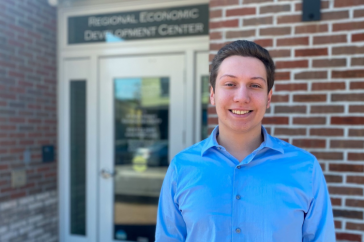New data presented to the Commission to Study School funding – working in collaboration with the Carsey School of Public Policy – shows that New Hampshire's existing school funding system produces inequities for the state’s students and taxpayers.
The independent commission, which was created by the New Hampshire General Court in the winter of 2019, received an initial analysis of disparities found in local school district expenditures and their effect on student outcomes during its most recent meeting on Aug. 10. This information was provided by the American Institutes for Research (AIR) as part of its contract with the commission to analyze fiscal and educational inequities across all public school districts in the state.
The use of a national research firm with expertise in matters of school funding equity and educational adequacy represents a first. The commission hopes to overcome some of the limitations of prior commissions and study committees that lacked access to objective and comprehensive analyses. Since it began meeting in January 2020, the commission has emphasized the need to create a statewide solution to the challenges of assuring that all students have an equal opportunity to an adequate education. Following the ruling in the Claremont II decision in 1997, the commission intends to propose a funding process that avoids “horizontal resource replication” (allocating an equal amount to all districts regardless of need) and enables the state to meets its Constitutional responsibility to ensure, “the provision of an adequate public education and an adequate level of resources for all students in New Hampshire.”
“The release of this preliminary data helps the commission and public to see the differences in opportunities for an adequate education across New Hampshire school districts," said Bruce Mallory, who serves as project manager for the Carsey School on this initiative. "And it shows how the highly variable property tax rates used to raise local funds for schools can affect school budgets. In the end, the data demonstrate that students with greater educational needs who live in communities with relatively low school spending have poorer outcomes than their peers. The commission will be recommending policy solutions that can reduce those inequities and assure that all students have the chance to achieve their potential regardless of where they live.”
"The data demonstrate that students with greater educational needs who live in communities with relatively low school spending have poorer outcomes than their peers."
This was the first part of a two-phase release of AIR’s findings. Monday’s presentation focused on what is known about school district expenditures and the factors that affect student needs, including poverty, special education services, and support for English Language Learners. AIR examined student outcomes such as test scores and graduation rates with respect to local property values and student needs. The findings offered on Monday clearly show how the resources necessary to provide the opportunity for equitable educational outcomes vary significantly across school districts.
AIR summarized its Initial findings with four key points:
- New Hampshire’s existing school funding system is inequitable from both student and taxpayer perspectives.
- Districts with larger percentages of economically disadvantaged students, English learners, and special education students generally have lower outcomes than districts with a lower percentage of students with additional needs.
- AIR’s cost modeling indicates that districts with higher needs (students eligible for free or reduced-price lunch, English language learners, special education students) and small districts require more spending per student to achieve a common level of outcomes.
- AIR’s findings demonstrate that weighted funding according to the costs facing each district leads to a distribution that would more adequately fund high-need districts.
Findings from the next phase of AIR’s work will focus on identifying the amount needed from local and state property taxes in view of other state revenue sources to fund an adequate education for all students, regardless of their needs or where they live. AIR will present this part of their analysis to the commission’s fiscal policy workgroup at its meeting Aug. 17 and then to the full commission on Aug. 24. The commission’s recommendations to the legislature, to be drafted later this fall, will reflect a statewide approach to equalizing educational opportunity as well as the need for school districts to set budgets and spend funds based on local priorities and decisions, consistent with state statutes and regulations. Learn about upcoming public comment sections.





















































